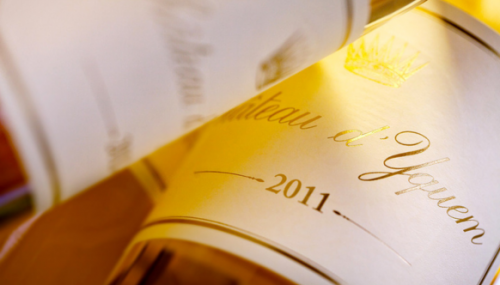September 9, 2024
How Sweetness in Wine is Measured

Understanding the sweetness of wine is essential for both enthusiasts and collectors, as it greatly influences a wine's flavour profile and overall experience. This article explores the methods used to measure wine sweetness and provides insights into how these measurements impact the perception of a wine.
The Basics of Wine Sweetness
Wine sweetness is a critical factor in determining a wine's taste and style. Sweetness in wine primarily comes from residual sugar, which is the natural sugar left in the wine after fermentation. The sweetness level can range from bone-dry to intensely sweet, affecting the wine's overall balance and flavour.
Measuring Residual Sugar
Residual sugar is measured in grams per litre (g/L) and indicates how much sugar remains in the wine after fermentation. Here are the key methods for measuring wine sweetness:
-
Degrees Brix: This scale measures the sugar content in grape juice before fermentation. A higher Brix value indicates a higher sugar content. While Brix is more commonly used in the winemaking process, it provides an initial indication of potential sweetness.
-
Oechsle Scale: Commonly used in Germany and Switzerland, the Oechsle scale measures the density of grape must. It correlates with the sugar content and helps estimate the potential alcohol level and sweetness of the wine.
-
Plato Scale: Similar to Brix, the Plato scale measures the concentration of sugars in grape must. It is used primarily in winemaking to assess the potential sweetness of the wine before fermentation.
-
Sweetness Perception: In addition to technical measurements, sweetness is also evaluated subjectively by tasting. This involves assessing the balance between sweetness, acidity, and other flavour components. A wine with high residual sugar will taste sweeter, but its overall impression will depend on its acidity and other flavour characteristics.
Types of Sweet Wines
Sweet wines come in various styles, each with distinct characteristics. Understanding these types can help in recognising the sweetness level:
-
Dry Wines: Typically contain less than 5 g/L of residual sugar and are perceived as not sweet. Examples include many Sauvignon Blancs and Chardonnays.
-
Off-Dry Wines: These wines have a slightly perceptible sweetness, generally between 5 and 15 g/L of residual sugar. Examples include some Rieslings and Chenin Blancs.
-
Medium-Sweet Wines: With residual sugar levels between 15 and 45 g/L, these wines offer a noticeable sweetness. Examples include many Moscato and Gewürztraminer wines.
-
Sweet Wines: These wines have more than 45 g/L of residual sugar, resulting in a rich and intense sweetness. Examples include Sauternes, Tokaji, and Ice Wine.
The Role of Acidity
Acidity plays a crucial role in balancing sweetness. High acidity can offset sweetness, making a wine taste less sugary and more refreshing. This balance is particularly important in sweet wines, where acidity can enhance the overall flavour profile and prevent the wine from feeling cloying.
Factors Affecting Sweetness
Several factors influence the sweetness of wine, including:
-
Grape Variety: Different grape varieties have varying levels of natural sugar, affecting the final sweetness of the wine. For example, Riesling and Muscat are known for their higher natural sugar content.
-
Harvest Time: Grapes harvested later in the season often have higher sugar levels due to prolonged ripening. This can result in sweeter wines.
-
Winemaking Techniques: Techniques such as late harvesting, noble rot (Botrytis cinerea), and freezing (for Ice Wine) are used to concentrate sugars and produce sweeter wines.
-
Fortification: In some wines, additional alcohol is added to stop fermentation and retain residual sugar, resulting in sweeter styles like Port and Madeira.
Conclusion
Measuring sweetness in wine involves a combination of technical methods and sensory evaluation. By understanding the various scales and factors influencing sweetness, you can better appreciate the complexity and range of wines available. Whether you prefer a crisp, dry white or a luscious dessert wine, knowing how sweetness is measured helps you make informed choices and enhances your wine experience.
